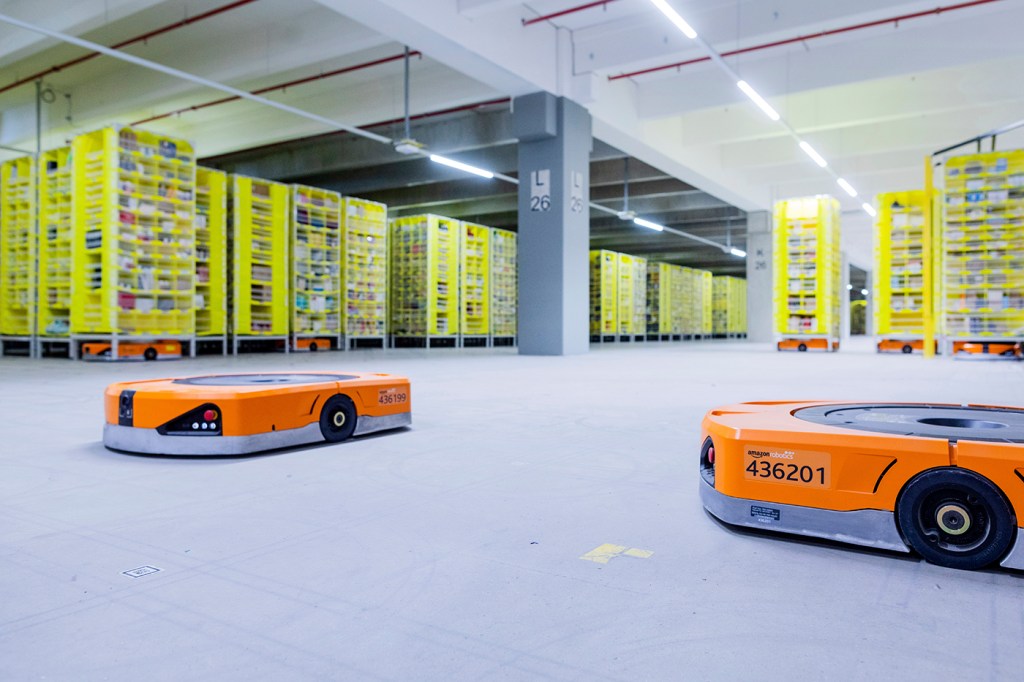Here’s why US workers can be optimistic about the next decade

The United States unemployment rate of 4.2% is the lowest since 1969—a stunning dynamic that has created optimism for the American workforce.
“It’s really amazing,” says Alicia Sasser Modestino, an economist and associate professor at Northeastern. “A year ago, if you asked any economist, we would never have predicted this super-tight labor market.”
Modestino links the ever-increasing demand for labor to the “Great Resignation” created by the millions of American workers who have quit jobs during the COVID-19 pandemic.

Alicia Sasser Modestino, associate professor of public policy and urban affairs and economics, as well as the associate director of research for the Dukakis Center for Urban and Regional Policy. Photo by Ruby Wallau/Northeastern University
“In part it’s due to people reevaluating what they’re doing, but also very generous unemployment insurance benefits and other public support that have given workers the opportunity to take a pause and think about what is safe and needed for their families,” Modestino says. “The supply of workers coming back into the labor market has not been as rapid [as anticipated], and that has meant wages are getting bid up.
“A tight labor market gives workers more power and increases their wages and benefits—but it doesn’t always happen for people at the bottom,” Modestino says. “What’s a little bit different right now is that it’s not just for people at the top of the wage distribution. It’s also for people in low-wage, entry-level jobs.”
How long will these conditions continue? Modestino spoke with News@Northeastern about the future of work and her optimism for workers as U.S. companies pursue automation over the next decade. Her comments have been edited for brevity and clarity.
The pandemic followed the Great Recession of 2008-09. How did that economic downturn affect Americans who were looking for work a decade ago?
With the Great Recession, our research showed that when the labor market is tight, employers have the opportunity to get the best possible candidates without having to pay a premium for them. Employers were raising skill requirements and becoming very choosy—for example, requiring a four-year college degree or five years of experience—simply because there were a lot of skilled workers that were suddenly unemployed. As the economy recovered, the supply of available workers fell and we saw some employers lower their education and experience requirements to be able to fill jobs that were in high demand.
Are we seeing a similar trend during the COVID-19 era?
Yes. This summer, as we reopened large parts of the economy in the health-care, hospitality, retail, and restaurant sectors, we saw this huge demand for workers, particularly those in low-wage, entry-level jobs. At the same time, many of these workers still faced childcare constraints, lived in communities with vulnerable populations, and had some financial cushion from the last round of direct federal aid and unemployment insurance benefits. In addition to raising wages, employers also became less picky by reducing the requirement to have a four-year college degree as well as the number of years of experience [required for applicants]. They even started hiring teens—the least experienced workers—in greater numbers.
Does the loosening of requirements for workers mean that businesses are lowering their standards?
When you take a college degree or five years of experience off a job posting, is it really lowering your skill requirements? Are you getting somebody who is less qualified? Maybe and maybe not. You could imagine having five years of experience in construction could make a big difference, compared to one year or zero—and in that case you would be lowering your requirements. But in terms of a college degree, many economists see this as just a proxy or shorthand way of identifying a high-quality worker rather than actually identifying a set of minimum skills needed for the job.
And we all do that, even in the ‘informal’ labor market. When we think about hiring a babysitter, we’d love to have somebody who has a master’s degree in early childhood education and five years experience. But you end up with the college student down the street, and that’s good enough, right? It depends on what is out in the market and what you need for that job.
How long do you expect the market to continue to be favorable to workers?
When the U.S. turned off the extra unemployment insurance benefits in September, there was an expectation we would see a big jump in labor-force participation—and we really haven’t. That’s because of things that are keeping people out of the labor force: They retired early, or they still are caring for children, or they’re fearful of an in-person job and returning to work with every wave of COVID-19 that comes along.
I think that there will be this continued strength in the labor market at least over the next six months to a year as we work more slowly through that backlog and tempt more workers to come back into the workforce, or bring younger, newer workers into the workforce. Because right now people are not jumping off the sidelines as rapidly as we would have expected.
Many U.S. companies are responding to the labor shortage by investing in automation, which will force workers to learn new skills. Are you optimistic that the next five to 10 years will be good for U.S. workers?
Absolutely. Automation certainly displaces some workers, but what it really is more likely to do is change the nature of jobs that are out there, and the skills that people need. We’ve seen this in the past where firms and workers adapt over time, either through on-the-job training or more structured workforce-development programs.
Automation can actually have an upside for workers by increasing the quality of jobs. Think about the robotics that you can install in a seafood-processing plant that makes it less likely you’re going to cut yourself or suffer any kind of workplace injury because of the slippery, cold, dangerous conditions.
Employees also get to do different types of work instead of doing the same repetitive tasks. That’s another thing we hear from employers: Because there are different types of processing that need to happen, it’s not like you’ll work on one piece of machinery all day. So it’s a higher-quality job, a safer job, and it pays a higher wage because now you’re asking people to develop these skills.
For media inquiries, please contact media@northeastern.edu.






